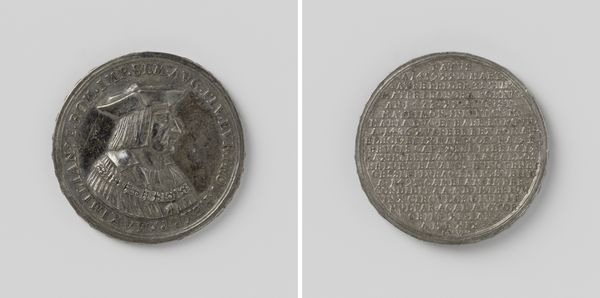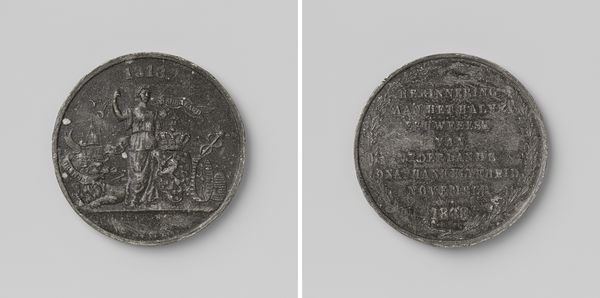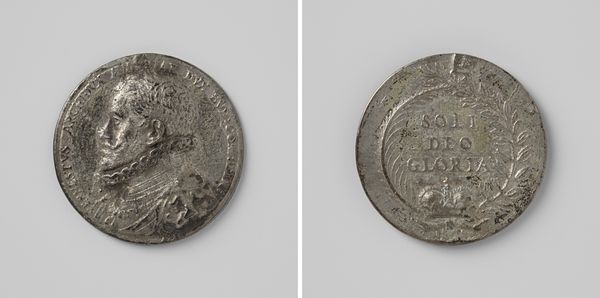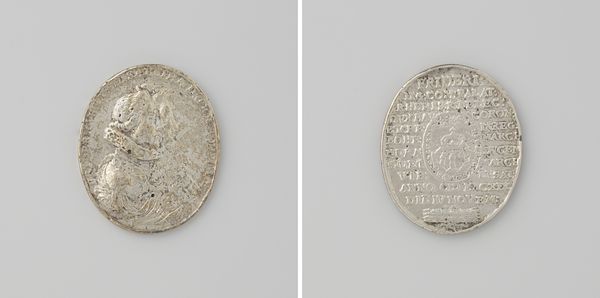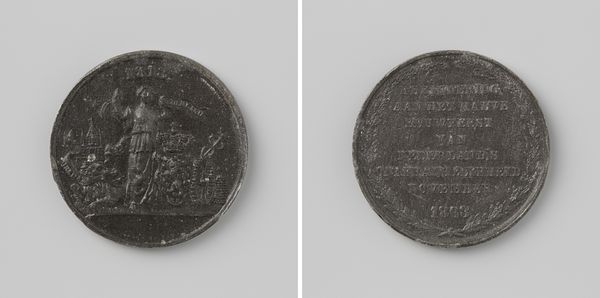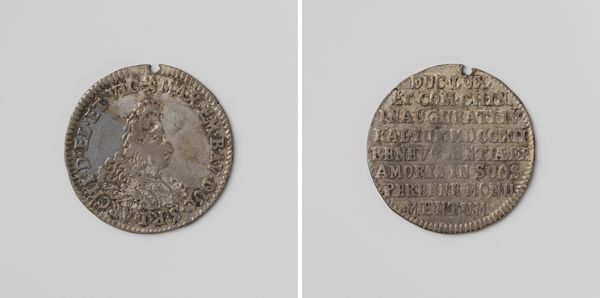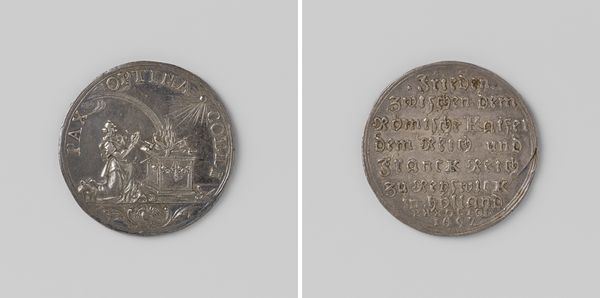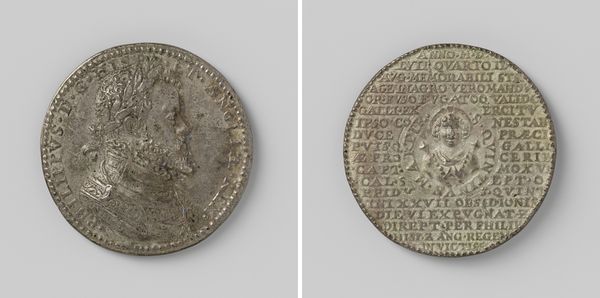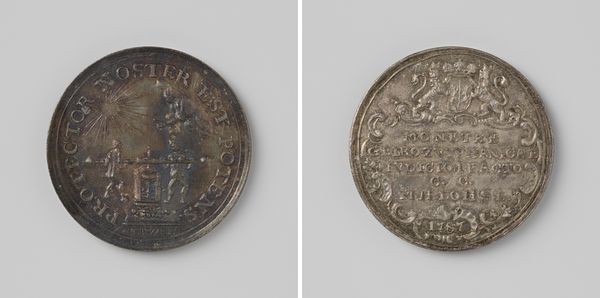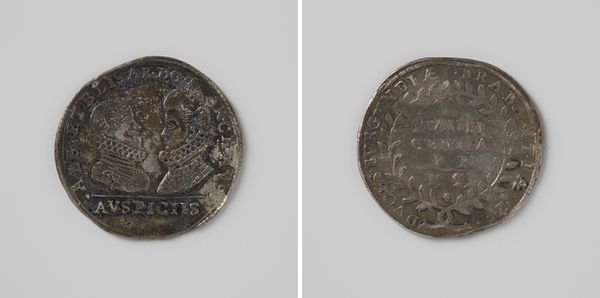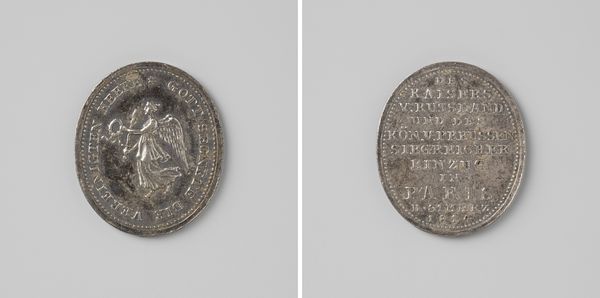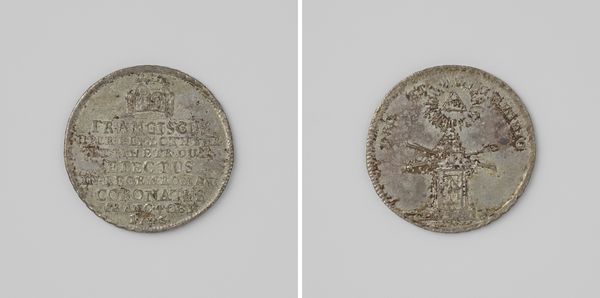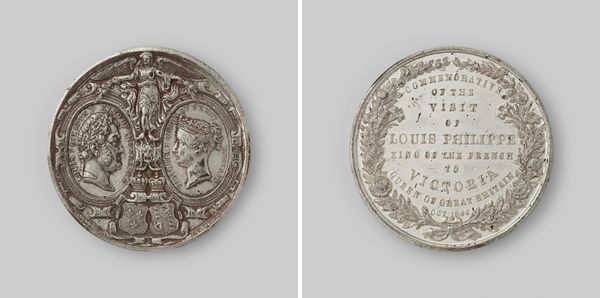
metal, relief, engraving
#
portrait
#
baroque
#
metal
#
relief
#
engraving
Dimensions: diameter 3.4 cm, weight 1.45 gr
Copyright: Rijks Museum: Open Domain
Editor: This is a commemorative metal relief, “Overlijden van Hendrik Verbeek,” created in 1749. I’m immediately struck by how this small, personal object speaks to such grand themes. What can you tell me about this piece and the context it comes from? Curator: Well, consider that this piece wasn’t designed as high art, but as a marker of status and remembrance within a specific social stratum. These kinds of objects circulated amongst elite families, solidifying their legacies and reinforcing social hierarchies. Editor: So, the small scale emphasizes that this isn't meant for public consumption? Curator: Exactly! Think of it as a form of controlled messaging. Who gets to be remembered, and how? The elaborate coat of arms versus the blocky text... How might that visual language be working to present a certain image? Editor: I suppose the coat of arms, even if difficult for us to decipher now, would have been instantly recognizable to Verbeek's peers, underlining his lineage. The inscription is like a very formal, public record distilled into a private keepsake. Curator: Precisely. And in a period dominated by powerful trading companies and burgeoning colonial power, marking one’s territory wasn't just about land but also about establishing a family’s place in this new social and economic order. What strikes you about the condition of the metal? Editor: It looks worn, handled… a tactile connection to the past? Maybe it circulated among family members, a tangible reminder of their ancestor? Curator: And what stories might *they* have wanted to tell, through their interaction with it? Remembering it’s about the power to curate one's image, even posthumously. Editor: I never considered the level of active participation with a memorial object. It really shifts my understanding of it as not just a static piece, but part of an ongoing narrative. Curator: Right. It’s about the political life of imagery within families and communities. Hopefully, it challenges us to consider, whose stories *aren't* being told, and who controls that narrative?
Comments
No comments
Be the first to comment and join the conversation on the ultimate creative platform.
